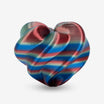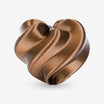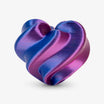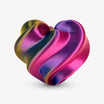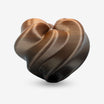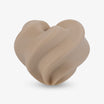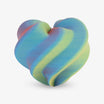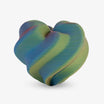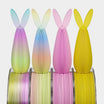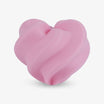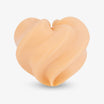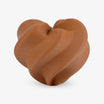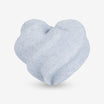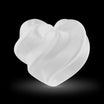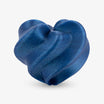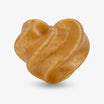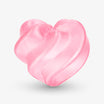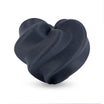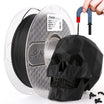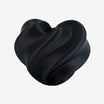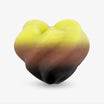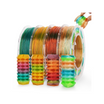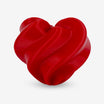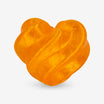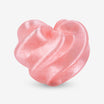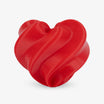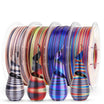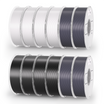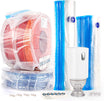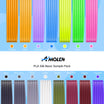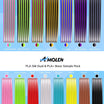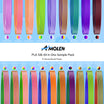| Category | Use Cases | Applications |
| Everyday Functional Items | Custom phone cases, wearable accessories, cable organizers, flexible replacement parts, flexible mounts, and holders | Protects phones, organizes cords, replaces worn parts, and secures devices |
| Sports and Outdoor Gear | Shoe soles and insoles, protective pads, straps and fasteners, waterproof/weather-resistant components | Enhances comfort and protection during activities like cycling, skateboarding, and in wet conditions |
| Flexible Toys and Creative Prints | Bendable figures, custom phone grips and stands, wearable costume pieces, educational tools, artistic items | Toys, phone accessories, cosplay, learning models, sculptures |
Thermoplastic Polyurethane (TPU) is quickly becoming a favorite in 3D printing. Because it is flexible and strong, it is great for making custom phone cases, outdoor gear, and accessories. If you are making useful items or working on creative projects, TPU lets you build what you need while keeping strength and comfort. Now let’s look at how this material opens new possibilities in 3D printing.
What is TPU and What Makes It Unique?
First, know what makes TPU special as a 3D printing material. TPU is flexible and strong. But it is not like hard plastics — it can bend, stretch, and take hits and still stay strong. So it is good for projects that need both bend and strength.
Elasticity and Strength
TPU behaves like rubber—it stretches when force is applied but always returns to its original shape without any damage. This elasticity lets TPU prints bend, compress, and flex many times without cracking or breaking. Even thin, flexible parts stay strong and can handle mechanical stress over time.
Abrasion and Chemical Resistance
TPU resists wear from friction and rough surfaces. It also handles oils, greases, and some chemicals well, making it a good choice for outdoor and industrial use where materials face tougher conditions.
Advantages of Printing
While TPU has many benefits, printing with it can be hard because it's soft. To get the best results, slow down the print speed, control the temperature, and sometimes use special tools like direct-drive extruders. These steps will help make smooth and good-quality prints.
TPU in Everyday Functional Items
The combination of flexibility and durability makes TPU perfect for creating practical, everyday items.
- Custom Phone Cases: TPU phone cases offer shock absorption, a snug fit, and a comfortable grip. They protect phones from drops while maintaining a slim profile and easy access to buttons and ports. Custom 3D prints ensure precise fits for various phone models.
- Wearable Accessories: TPU bands for watches and fitness trackers are flexible, durable, and sweat-resistant. They comfortably conform to wrists and withstand extended wear during physical activities.
- Cable Organizers and Clips: TPU's elasticity makes it perfect for cable ties, clips, and organizers that hold cords securely but can flex and release without breaking. These accessories help maintain tidy workspaces and organized areas.
- Flexible Replacement Parts: Soft hinges, seals, and gaskets printed with TPU can replace worn or broken parts. Their durability and flexibility improve longevity in places where rigid materials would fail.
- Flexible Mounts and Holders: TPU mounts securely hold cameras, phones, or tools while absorbing shocks and adapting to uneven surfaces. These items show how TPU can make everyday products more comfortable and adaptable.
TPU in Sports and Outdoor Gear
Sports and outdoor gear require both comfort and toughness, and TPU is perfect for meeting these demands.
- Shoe Soles and Insoles: Custom TPU shoe soles and insoles offer personalized cushioning and support, tailored to foot shape and activity level. This reduces fatigue and enhances comfort during long activities.
- Protective Pads: Pads for knees, elbows, and joints printed with TPU absorb impact while allowing for a full range of motion, making them ideal for activities like cycling, skateboarding, and other high-impact sports.
- Straps and Fasteners: TPU straps are flexible yet strong, gripping securely on backpacks, helmets, and other gear. They hold firmly in place during movement, combining strength with comfort.
- Waterproof and Weather-Resistant Components: TPU resists moisture and UV exposure, making it perfect for seals, covers, and components used in wet or sunny conditions. The lightweight nature of TPU also helps reduce the overall bulk of gear, improving comfort during prolonged wear.
TPU in Flexible Toys and Creative Prints
Beyond functional uses, TPU offers exciting possibilities for creative and fun 3D printing projects.
- Bendable Figures and Models: Toys printed with TPU can twist and bend without damage, making them more durable and interactive. Whether it's a bendable action figure or a flexible model, TPU's properties add durability to creative designs.
- Custom Phone Grips and Stands: Flexible TPU grips and stands provide comfortable handling and can be reshaped or repositioned as needed. These make excellent accessories for personalized phone setups.
- Wearable Costume Pieces and Props: Elastic TPU parts are perfect for cosplay and costume accessories, ensuring they fit snugly and move naturally with the wearer.
- Educational Tools: Soft, durable TPU models offer safe, tactile experiences for children, enhancing hands-on learning and exploration.
- Artistic and Decorative Items: TPU can be used to create sculptures or jewelry with dynamic shapes and textures that rigid materials can't achieve. These creative applications highlight the versatility of TPU beyond functional use.
Practical Tips for Successful TPU Printing
Successfully printing with TPU requires attention to a few key factors. Adjusting these parameters properly can help prevent common issues and ensure smooth, high-quality prints.
Print Speed and Extruder Control
Set the print speed between 20-30 mm/s to ensure smooth material extrusion and reduce stringing. Using a direct-drive extruder can improve the accuracy of feeding flexible materials, preventing clogs or jams caused by retraction movements.
Temperature and Bed Settings
Adjust the nozzle temperature between 220-250°C, depending on the brand of TPU you're using. Keep the heated bed temperature between 50-60°C to improve adhesion and prevent warping. A PEI sheet or painter's tape on the bed can enhance adhesion and make it easier to remove the print after completion.
Retraction and Material Management
To prevent clogs, minimize or turn off the retraction feature. TPU is hygroscopic, meaning it absorbs moisture, so store it in an airtight container with desiccant to keep it dry. Proper material management will help maintain high print quality and prevent issues during the printing process.
Test Prints and Parameter Adjustments
Start with small test pieces for your first prints. They let you adjust the settings so you can try bigger, more complex models with fewer problems. This saves material and gives better results over time.
Bring Your Ideas to Life with TPU
TPU's properties make it a great choice for many projects that need flexibility, durability, and comfort. It is good for protective phone cases, sports gear, or fun toys, and it opens up many possibilities in 3D printing. If you learn the basics and set up your printer well, you can get great results with this flexible filament.
3 FAQs about 3D Printing with TPU
Q1: How do you store TPU filament properly?
A: TPU absorbs moisture, which can affect print quality. To keep it dry, store the TPU filament in an airtight container with desiccant packs. Vacuum-sealed bags offer extra protection. Keep it away from sunlight and heat sources to prevent degradation.
Q2: How does TPU compare to PLA in terms of printing?
A: TPU and PLA behave differently. PLA is easier to print, requires lower temperatures, and doesn't require specialized equipment. Mastering some basic PLA printing techniques will make the process go more smoothly. TPU, however, requires more precise settings, such as slower speeds and extruder adjustments. It's better for flexible items like phone cases, while PLA is more rigid.
Q3: What is the best way to clean TPU parts?
A: Use mild soap and water to clean TPU parts. For tougher stains, use a soft cloth with a non-abrasive cleaner. Avoid harsh chemicals. For small imperfections, gently polish with a fine abrasive cloth. Regularly wipe off dust to keep parts in good condition.

